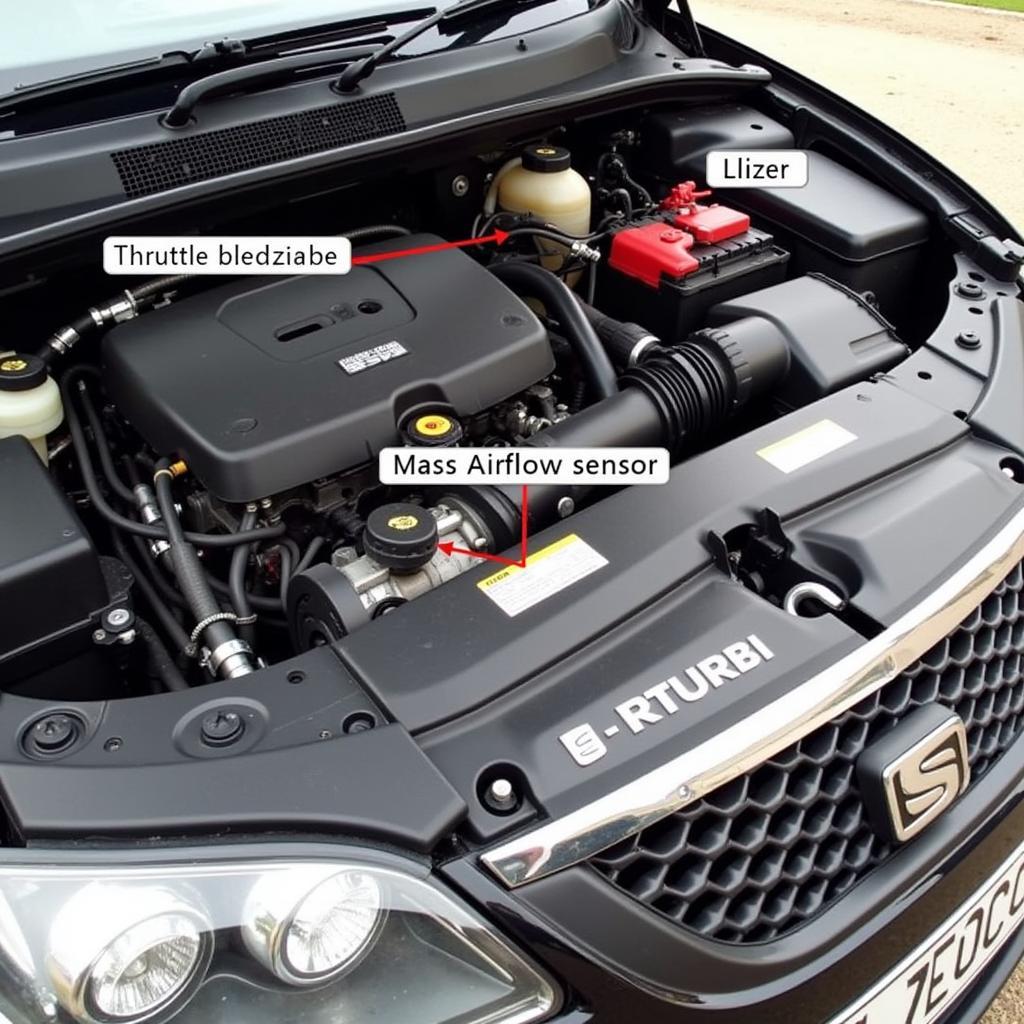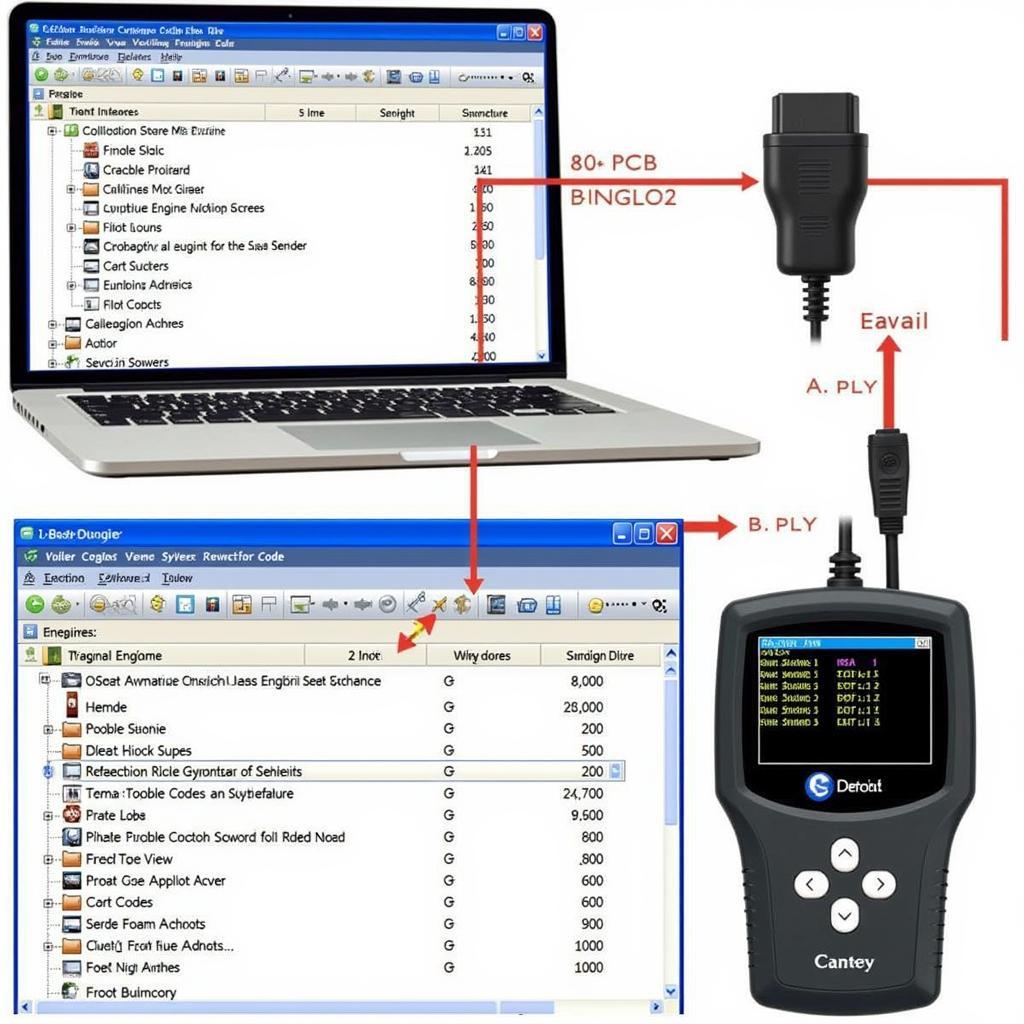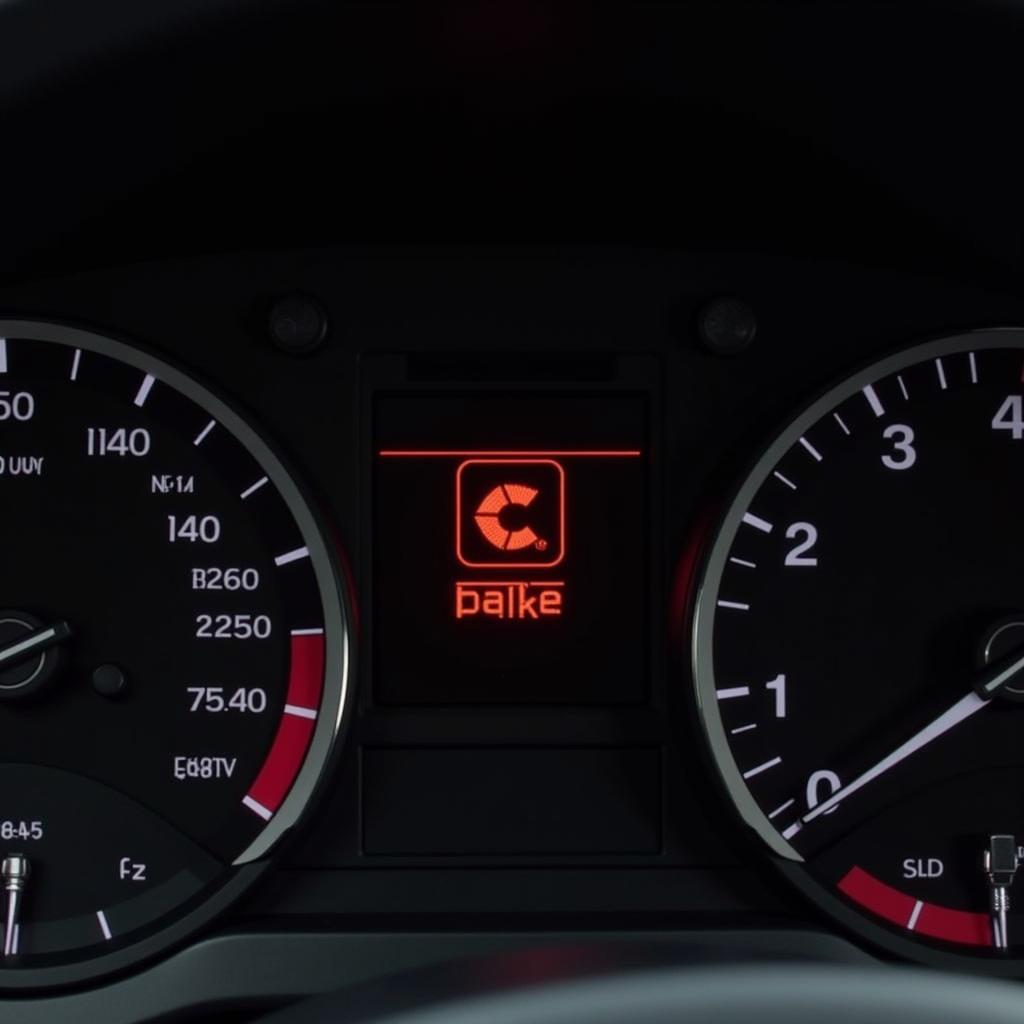The EPC warning light, a common yet perplexing sight for Seat Cordoba owners, often signals an issue within the electronic power control system. This system manages crucial aspects of your vehicle’s performance, encompassing engine management, transmission, and throttle control. Ignoring this warning could lead to performance issues, reduced fuel efficiency, or even leave you stranded. This comprehensive guide will delve into the common causes of the EPC warning light in a Seat Cordoba, offer practical DIY troubleshooting tips, and provide insights into when professional help is necessary.
Unveiling the EPC Light: What Triggers It?
The EPC warning light, typically represented by an engine symbol accompanied by the letters “EPC”, illuminates when your Cordoba’s Engine Control Unit (ECU) detects a malfunction within the electronic power control system. This light can be triggered by a range of issues, from minor sensor glitches to more serious problems with your throttle body or electronic throttle control system.
Common Culprits Behind the EPC Warning Light:
-
Faulty Throttle Position Sensor: This sensor relays information about the position of your accelerator pedal to the ECU. A malfunctioning sensor can disrupt the fuel-air mixture, leading to poor acceleration or engine stalling.
-
Malfunctioning Mass Air Flow Sensor: The MAF sensor measures the amount of air entering the engine. A faulty sensor can cause the ECU to miscalculate the required fuel, leading to reduced performance and increased emissions.
-
Faulty Brake Light Switch: Surprisingly, a faulty brake light switch can also trigger the EPC light. This is because the switch plays a role in the cruise control and electronic stability control systems, which are linked to the EPC system.
-
Vacuum Leaks: Leaks in the vacuum system, particularly those affecting the brake booster or intake manifold, can disrupt the airflow and pressure readings, leading to an illuminated EPC light.
-
Spark Plug or Ignition Coil Problems: Worn-out spark plugs or faulty ignition coils can disrupt the combustion process, causing misfires and potentially triggering the EPC warning light.
 Seat Cordoba Engine Bay
Seat Cordoba Engine Bay
DIY Troubleshooting: Can You Tackle the EPC Light Yourself?
Before rushing to the mechanic, there are a few simple checks you can perform to potentially diagnose the EPC warning light in your Seat Cordoba:
-
Visual Inspection: Begin by visually inspecting the engine bay for any loose or damaged wires, vacuum hoses, or connections.
-
Check Engine Codes: Most OBD-II scanners, readily available at auto parts stores, can read the engine codes stored in your Cordoba’s ECU. These codes provide specific insights into the problem area, aiding in accurate diagnosis.
-
Battery Check: Ensure your battery connections are clean, tight, and corrosion-free. A weak battery can sometimes cause erratic behavior in the electronic systems.
-
Throttle Body Cleaning: If comfortable with basic car maintenance, you can cautiously attempt to clean the throttle body using a specialized cleaner. However, exercise caution as improper cleaning can cause damage.
 OBD2 Scanner Reading Codes
OBD2 Scanner Reading Codes
When to Seek Professional Help: Don’t Ignore Persistent Warnings
While some EPC warning light triggers can be addressed with DIY solutions, seeking professional help is crucial if:
-
The EPC Light Remains Illuminated: If the light persists even after basic troubleshooting, it indicates a more complex issue requiring professional diagnosis.
-
You Experience Performance Problems: Significant performance issues like engine stalling, rough idling, or reduced power alongside the EPC light warrant immediate attention from a qualified mechanic.
-
You Lack Experience: If you are uncomfortable performing any of the DIY troubleshooting steps, it is always best to err on the side of caution and consult a professional.
Expert Insight:
“The EPC warning light shouldn’t be ignored,” advises John Miller, a seasoned automotive electrical engineer specializing in European vehicles. “While a simple loose connection might be the culprit, more intricate problems within the engine management system could be at play. Addressing the issue promptly can prevent further damage and potentially save you from costly repairs down the line.”
Preventing Future EPC Light Appearances: Proactive Maintenance Tips
While not all EPC warning light occurrences are preventable, proactive maintenance can significantly reduce the risk:
-
Regular Servicing: Adhere to your Cordoba’s recommended service schedule for timely inspections, fluid changes, and replacement of wear-and-tear components.
-
Quality Parts: When replacing parts like sensors, spark plugs, or ignition coils, opt for high-quality components from reputable brands to ensure optimal performance and longevity.
-
Address Warning Lights Promptly: Ignoring any warning light, even if seemingly minor, can lead to more substantial problems down the line.
 Seat Cordoba Undergoing Service
Seat Cordoba Undergoing Service
Conclusion: Taking Charge of the EPC Warning Light
The EPC warning light in your Seat Cordoba, though potentially alarming, doesn’t necessarily signify a catastrophic problem. Understanding its triggers, performing basic troubleshooting, and knowing when to seek professional help can save you from headaches and potentially expensive repairs. Remember, proactive maintenance and timely attention to warning signs are key to keeping your Cordoba running smoothly and reliably.

